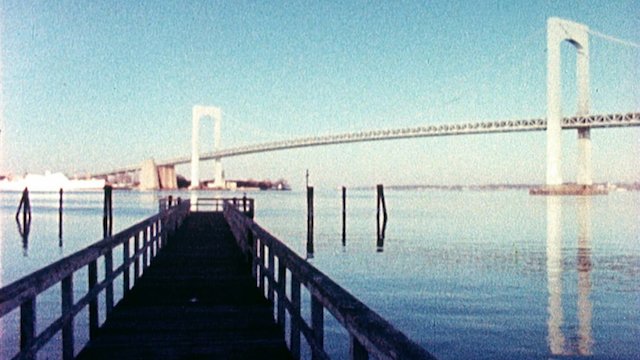
The Man Who Could Not See Far Enough
Where to Watch The Man Who Could Not See Far Enough

The Man Who Could Not See Far Enough is a 1981 experimental film directed by Peter Rose. It's a compelling and thought-provoking piece that deftly uses both personal details and cosmological events to question traditional notions of time, space, and perception.
The film is not a conventional narrative but is more a visual documentation of Rose’s exploration of sight, perception, and self-reflection. It is essentially a poetic and philosophical journey, a travelogue of the mind. It weaves a narrative not through words, but through arresting imagery and distinctive visual strategies, constructing a filmic tapestry of experience and introspection.
The film is divided into five separate sections, each contributing to a narrative arc that bends toward the exploration of human perception. The first, 'The Luminous Image,' is a dive into the eye’s essential role in perception. Here, we observe a series of visually striking frames, escalating to the use of intensified time-lapse photography, establishing the film's themes of perception and its dynamics.
The second part, 'Landscape/Window Dream,' blends images from the past and present - tying personal perspectives with wider horizons, grounding in the understanding that individual perception is indeed shaped by its environment. This section is laced with contrasting elements of repose and activity, using evocative images of nature and performance-like maneuvers of people to create sensory rhythms and tempo changes.
'Moon with Broken Eye' - the third part - takes an innovative approach, flexing with the principles of optics. Here, Rose uses a theodolite - a technical instrument from surveying and engineering - to orient and engage with the world in a new manner. The resulting images are exceptionally geometric, refracted, and kaleidoscopic, suggesting a new dimension of sight and stirring an intriguing conversation about perspective.
The fourth segment, 'Journey to a Star,' underscores the film’s ambition and scale. It plunges into subjective time – interpreted by the juxtaposition of everyday life scenes and themes from various religions, cultures, and science. It also presents a compelling arrangement of images, giving an impression of an exotic journey beyond the familiar and hinting at Rose's relentless pursuit of understanding the human condition in a broader sense.
Lastly, the film culminates with 'Sky Ghost,' displaying breathtaking imagery of a total solar eclipse. This pivotal element enriches the film aesthetically and metaphorically, serving as a sublime conclusion to the exploration undertaken throughout its course. Rose's insight into capturing this profound spectacle underscores the enduring quest to perceive and understand our mysterious cosmos.
Notably, the film employs a vibrant score, soundtrack, and a smattering of voice-over to underscore its thematic explorations, further heightening the viewing experience. The dynamic soundtrack, incorporating classical music, sound synthesizers, ambient noise, and vocal elements, complements the stunning visual palette, heightening the sensory immersion. It manages to evoke the vivacity of life, ponderings on existence, and an insatiable curiosity about the bewildering world.
The conceptual framework of Peter Rose’s investigation – the play on perception and reality – cleverly aligns with the medium of film. Rose uses cinema to examine how our minds construct the 'reality' we perceive, how our senses shape our worldview, and thereby questions the relationship between seeing and knowing.
Overall, The Man Who Could Not See Far Enough is an avant-garde cinematic journey. Drugless in its hallucinations and passionately intellectual, it successfully presents a contemplative visual odyssey into how we view the world. The film asks its audience to consider profound questions about perception, existence, and the universe. It extends far beyond a standard movie to a visualization of a philosophical and phenomenological investigation, making it a uniquely unforgettable experience. The film is a compelling example of director Peter Rose's boundary-pushing ethos and signals his standing as a pioneer within the experimental film domain.
The Man Who Could Not See Far Enough is an existential vision quest that pushes us to examine our limited perception, encouraging us to strive for a deeper understanding of ourselves, our relationship with the world around us, and the nature of reality itself. It's a vibrant, lively film that holds a mirror to humanity and asks us to look deeper. This film is not for passive viewing but rather for those seeking a thought-provoking, introspective cinema.
The Man Who Could Not See Far Enough is a Documentary movie released in 1981. It has a runtime of 32 min. Critics and viewers have rated it mostly positive reviews, with an IMDb score of 8.0..



























